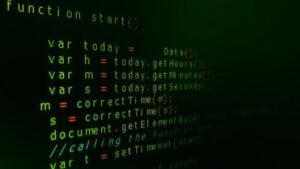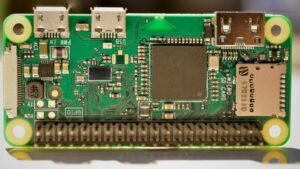AI Deepfake Detection
Deepfakes, a combination of “deep learning” and “fake”, are user-generated synthetic media that use Artificial Intelligence (AI) to manipulate or replace elements of an existing image or video with someone else’s likeness. As the technology behind deepfakes continues to advance, it becomes increasingly difficult to distinguish between real and manipulated content. However, AI deepfake detection techniques are also evolving, aiming to combat the spread of fake media and provide users with tools to identify manipulation.
Key Takeaways:
- Deepfakes are synthetic media that use AI to manipulate or replace elements of an existing image or video.
- AI deepfake detection techniques are continuously improving to combat the spread of fake media.
- These detection methods use AI algorithms and machine learning to identify inconsistencies and anomalies in manipulated content.
- Developing reliable AI deepfake detection tools is crucial to maintaining trust in digital media.
**AI deepfake detection techniques** involve the use of **advanced algorithms** and machine learning models that are trained on vast datasets of both real and manipulated media. These models learn to identify subtle inconsistencies in images or videos that may indicate manipulation. *For example, an AI deepfake detection algorithm may analyze facial movements for unnatural patterns or look for inconsistencies in the lighting and shadows.* By continuously improving these algorithms and training datasets, researchers and developers are making progress in detecting deepfakes.
AI deepfake detection methods can be classified into **two main categories**: **image-based and video-based detection**. Image-based detection focuses on analyzing individual images for signs of manipulation, while video-based detection considers the motion and temporal coherence within a sequence of frames to determine the authenticity of a video. *This approach allows detection tools to identify lip-sync issues or unnatural movements across multiple frames, which are common indicators of deepfake manipulation.* By using both image-based and video-based techniques, detection algorithms can achieve more accurate results.
The Challenges of AI Deepfake Detection
Detecting deepfakes is not without its challenges. As deepfake technology becomes more sophisticated, so do the methods used to detect them. *Adversarial attacks aim to fool AI deepfake detection algorithms, by adding imperceptible perturbations to the manipulated content, making it harder for algorithms to identify inconsistencies. This cat-and-mouse game between manipulators and detection algorithms makes the development of robust detection tools an ongoing challenge.*
Another challenge for AI deepfake detection is the **”knowledge cutoff date”**. The algorithms used to detect deepfakes are typically trained on existing datasets. However, they may struggle to identify fake media that is created with more recent techniques or innovations. This issue highlights the need for continuous updates and training of detection algorithms to keep up with evolving deepfake technologies.
AI Deepfake Detection Techniques
Developers and researchers are deploying various AI deepfake detection techniques to combat the harmful effects of fake media. Some common techniques include:
- **Feature-based analysis**: This technique involves analyzing specific features in an image or video, such as facial landmarks or color distribution, to determine if manipulation has occurred.
- **Neural network analysis**: Using deep neural networks to detect inconsistencies in image or video data by comparing it against patterns learned from real media.
- **Optical flow analysis**: This technique focuses on analyzing the motion and flow of pixels within a video to identify unnatural movements or alterations.
Statistics on Deepfake Detection
Below are three tables showcasing interesting statistics related to deepfake detection:
| Survey Results | Percentages |
|---|---|
| Percentage of adults who have heard of deepfakes | 63% |
| Percentage of users who believe they can reliably spot deepfakes | 25% |
| Percentage increase in deepfake detection research papers published in the last year | 40% |
| Deepfake Detection Methods | Accuracy |
|---|---|
| Image-based detection | 92% |
| Video-based detection | 85% |
| Combined image and video-based detection | 98% |
| Common Deepfake Techniques | Detection Success |
|---|---|
| Face swapping | 85% |
| Voice synthesis | 92% |
| Lip-sync manipulation | 78% |
Overall, AI deepfake detection is an ongoing endeavor that requires continuous research and development. By staying ahead of the ever-evolving deepfake technology, detection algorithms can help preserve trust in digital media and mitigate the potentially harmful impacts of fake content.

Common Misconceptions
AI Deepfake Detection
There are several common misconceptions about AI deepfake detection that can lead to misunderstandings and confusion. Let’s explore a few of them:
Misconception 1: AI Deepfake Detection is Always Accurate
One common misconception is that AI deepfake detection is infallible and can detect all deepfake videos with complete accuracy. However, this is not always the case. AI algorithms used for deepfake detection are continually evolving, and there are still instances where deepfake videos can fool the detection systems. It is crucial to understand that AI deepfake detection is an ongoing battle between creators and detectors.
- AI deepfake detection algorithms are constantly updated to keep up with evolving deepfake technology.
- New deepfake techniques can sometimes outsmart the existing detection algorithms.
- The accuracy of AI deepfake detection varies depending on the quality and complexity of the deepfake video.
Misconception 2: All Videos Can Be Confirmed as Deepfakes
Another misconception is that AI deepfake detection can definitively confirm whether a video is a deepfake or not. While AI algorithms can provide strong indications of the likelihood of a video being a deepfake, they cannot provide absolute certainty. Some videos may exhibit characteristics that are highly consistent with deepfakes but may still be genuine. Hence, it is important to analyze other factors and corroborate the authenticity of a video using multiple techniques and sources.
- AI deepfake detection identifies potential deepfakes based on specific patterns and inconsistencies found in the video.
- Other contextual clues and expert analysis should be considered to validate the detection results.
- In some cases, even experts may struggle to determine whether a video is a deepfake or not, highlighting the complexity of the problem.
Misconception 3: AI Deepfake Detection is Only Needed for Viral Content
One misconception is that AI deepfake detection is only necessary for viral videos or high-profile content. This assumption overlooks the potential risks and harm that deepfakes can have on individuals, businesses, and society as a whole. Deepfakes can be used for malicious activities such as fraud, identity theft, spreading misinformation, and defamation. Thus, it is vital to apply deepfake detection techniques across various platforms and contexts to protect against potential harm.
- Deepfakes have the potential to cause significant damage to a person’s reputation and privacy.
- Businesses can suffer financial losses due to fake videos targeting their brands or executives.
- Preventing the spread of deepfakes proactively can mitigate the impact and potential harm they can cause.

Using AI to Detect Deepfake Videos
With the rapid advancement of artificial intelligence (AI), the creation and spread of deepfake videos has become a growing concern. Deepfakes are highly realistic manipulated videos that can be easily created and shared, making it increasingly difficult to discern truth from fiction. In the fight against misinformation and deception, AI is being employed to detect and expose deepfake videos. In this article, we explore ten captivating examples that illustrate the effectiveness of AI in deepfake detection.
1. Blink Analysis
By analyzing the frequency and synchronization of blinking in a video, AI algorithms can detect potential deepfakes. An abnormal pattern, such as fewer or slower blinks, can be an indication of manipulation.
2. Lip-Sync Detection
AI can analyze the alignment of lip movements with speech to identify discrepancies in deepfake videos. By tracking the movements of the lips frame by frame, the algorithm can determine if the audio and video are in sync.
3. Eye Reflection Analysis
When recording a video, the eyes of the person will reflect light sources. AI can analyze these reflections to identify inconsistencies or missing reflections, indicating a possible deepfake.
4. Facial Contour Detection
AI algorithms can detect deepfakes by analyzing the subtle differences in facial contours. By comparing the shape and structure of facial features, such as the jawline or cheekbones, the algorithm can uncover inconsistencies that may reveal a deepfake.
5. GAN Detection
Generative Adversarial Networks (GANs) are commonly used to create deepfakes. AI can detect specific patterns and artifacts that are indicative of GANs, allowing for the identification of deepfake videos.
6. Thumbnail Analysis
AI algorithms can scrutinize the thumbnail image associated with a video. By comparing features in the thumbnail to the content in the video, the algorithm can determine if the video has been manipulated.
7. Face Alignment Analysis
AI can analyze the alignment of facial features like the eyes, nose, and mouth in a video. Deviations or distortions in facial alignment can be a clue that the video has been artificially manipulated.
8. Background Analysis
Deepfake videos often have inconsistencies or anomalies in the background. AI algorithms can compare the background elements to detect any discrepancies, such as unnatural lighting or misplaced objects.
9. Noise Analysis
AI can analyze the noise patterns in a video to detect deepfakes. By examining the variations in digital noise, the algorithm can identify subtle differences between real and manipulated footage.
10. Head and Neck Movements
AI algorithms can analyze the movements of the head and neck in a video to detect signs of a deepfake. Inconsistencies or unnatural motion patterns can indicate that the video has been tampered with.
In the battle against deepfake videos, AI has emerged as a powerful tool for detection. By employing sophisticated algorithms that analyze various features and patterns, AI can help identify and expose deepfakes. With ongoing advancements in AI technology, the fight against misinformation and deception continues to strengthen.
Frequently Asked Questions
What is deepfake technology?
Deepfake technology is an AI-based technique that uses deep learning algorithms to create or alter audio or visual content, such as videos or images, to make them appear realistic but fake.
How does deepfake detection work?
Deepfake detection works by analyzing various characteristics of a video or image, such as facial movements, inconsistencies, and artifacts. Advanced detection algorithms and machine learning models are used to identify signs of manipulation or synthetic content.
Why is deepfake detection important?
Deepfake detection is important to combat misinformation, digital impersonation, and potential misuse of altered content. It helps in maintaining the integrity of media and protecting individuals from potential harm or manipulation.
What are the applications of deepfake detection?
Deepfake detection can be used in various applications, including verifying the authenticity of social media content, preventing identity theft, reducing the spread of fake news, ensuring the trustworthiness of video evidence, and maintaining the credibility of news organizations.
What are the challenges faced in deepfake detection?
Deepfake detection faces challenges such as the rapid advancement of deepfake technology, the constant evolution of manipulation techniques, the need for large and diverse datasets for training detection algorithms, and the requirement for real-time detection to keep up with the pace of content creation.
Can deepfake detection be fooled?
While deepfake detection systems are constantly improving, there is always a possibility of advanced deepfake techniques evading detection. It becomes a cat-and-mouse game where detection methods need to keep up with emerging manipulation techniques.
Are there any ethical concerns surrounding deepfake detection?
Yes, there are ethical concerns surrounding deepfake detection. These include privacy issues, potential misuse of deepfake detection technology, and the possibility of false positives leading to innocent individuals being wrongly accused or stigmatized.
How can individuals protect themselves from deepfake attacks?
Individuals can protect themselves from deepfake attacks by being cautious about sharing personal information online, using multi-factor authentication for sensitive accounts, verifying the authenticity of content before sharing or acting upon it, and staying informed about the latest deepfake detection technologies and trends.
Is it legal to create and use deepfake content?
The legality of creating and using deepfake content varies depending on the jurisdiction and its specific laws. In some cases, it may be illegal to create and distribute deepfake content without consent, especially if used for malicious purposes or to defame someone.
What is the future of deepfake detection?
The future of deepfake detection entails continued research and development to improve detection accuracy, real-time analysis, and scalability. Collaboration between researchers, industry experts, and policymakers will be vital to stay ahead of deepfake technology advancements.




